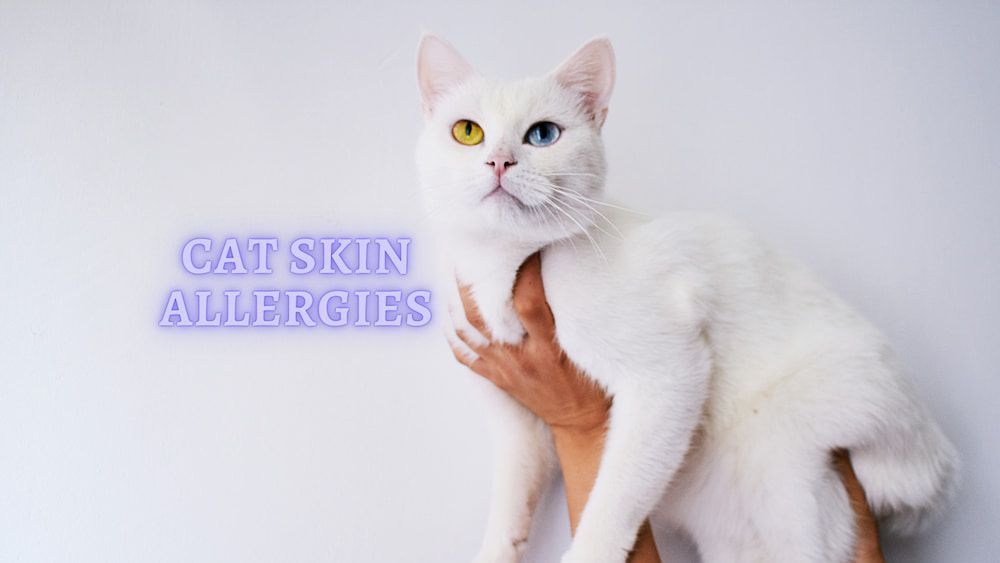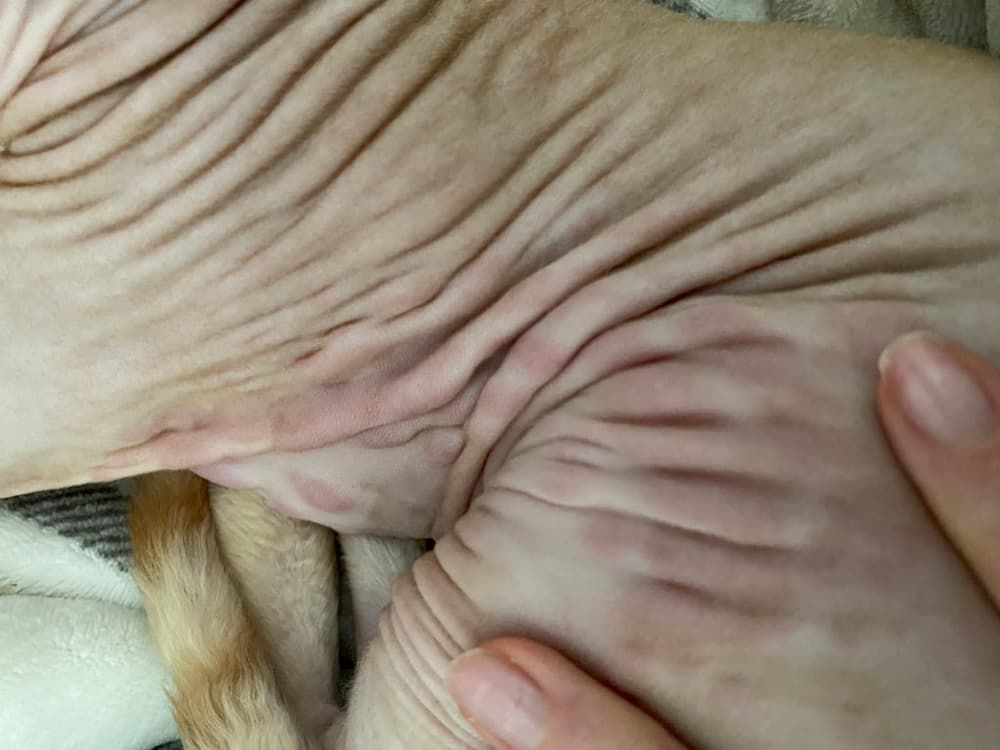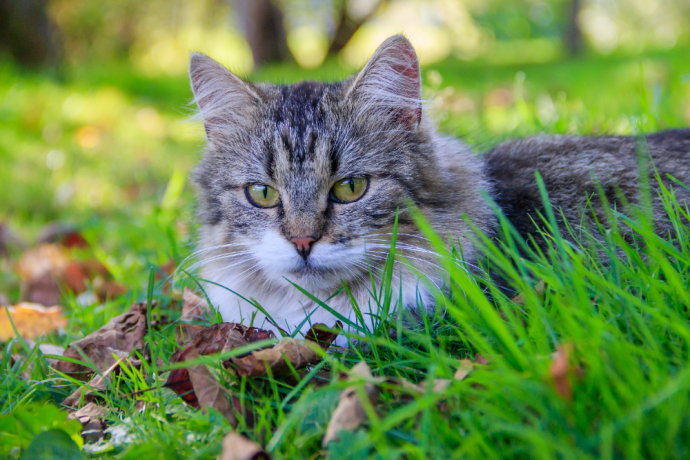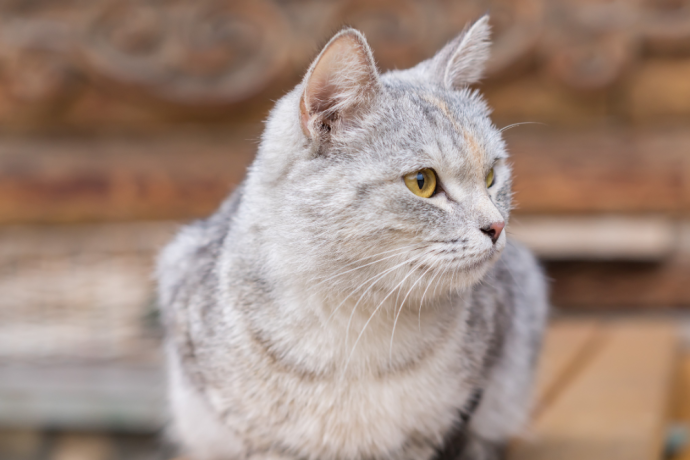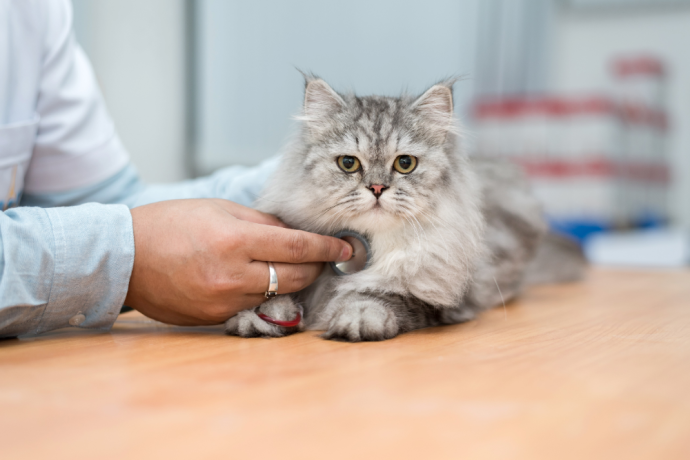Skin Allergies in Cats: Causes, Symptoms, and Treatment (Vet Advice)
Written by:
Author: Dr. Kathryn Dench
Dr. Kathryn Dench is an experience veterinary with over 10 years' experience in small animal and exotic pet medicine. Kate qualified from Cambridge University Veterinary School in 2007. Kate has worked in a number of veterinary practices in the UK. She has extensive experience in the medical care of pet species, from dogs and cats to chickens and chameleons! In free time, Kate writes pet advice in order to ensure that owners are receiving the best possible information on how to care for their pets.
View all 9 articlesLearn about our editorial process and veterinary review board.
Viewed: 542
Updated on: 06/30/2023
While the occasional scratch is perfectly normal, struggling with very itchy skin can be distracting and distressing for your cat. After flea problems, skin allergies are our feline friends’ most significant cause of itchy skin. This article delves deeper into skin allergies, looking at why they arise, what triggers them, and how to manage them.
READ MORE: Best Cat Food for Allergies
What Causes Allergies in Cats?
Allergies happen when the immune system responds excessively to a protein encountered in the environment called an allergen. The body misinterprets the allergen as harmful and produces an immune reaction against it.
Common allergens for cats include:
- flea saliva
- pollens
- dust
- mold
- food ingredients
- chemicals that come into contact with their skin, such as flea products or shampoos.
Different allergens affect different individuals: one allergic cat might be utterly unaffected by pollens but react very severely to eating fish. In contrast, it might be the other way around for another cat. Usually, allergies take some time to develop, meaning allergies can develop against things your cat was previously fine with. For example, a type of food or a flea control product you have used for months or years with no problems can suddenly start to cause a reaction in your cat.
There can also be a genetic predisposition to allergies. When animals tend to develop allergies to a range of allergens, this is called atopy. Atopy can be very frustrating because it is often impossible to identify all of the allergens triggering the allergic reaction, much less avoid them all – especially allergens inhaled like pollens and mold. In these cases, controlling the responses to not affect the cat too badly is the goal.
While a skin allergy, formally termed allergic dermatitis, is a common symptom of allergies, not every cat’s allergy will show up as a skin condition. Some cats might have allergies such as a cough, stuffy nose, or digestive upset, even though the process behind the allergy is the same – it depends on how their immune system responds to the allergen.
READ MORE: Best Probiotics for Cats
Cat Skin Allergy Symptoms
Cats with allergic dermatitis are typically very itchy and sore. The symptoms you notice might include:
- Scratching
- Licking their skin
- Biting their skin
- Hair loss
- Redness of the skin
- Spots or a rash
- Skin flaking
- Wet red lesions
- A bad odor
Some cats with skin allergies lick their skin excessively to the extent that they lose hair in areas of their skin or can cause wounds. They may also lick or bite at their paws, the base of their tail, or the back of their hind legs. In milder cases, you might not actually see your cat licking or biting their skin, but orange-brown saliva staining on white areas of fur can be a tell-tale sign that your cat has been licking this area. The fur may be matted together in severe cases, and the skin may be red and oozing. The irritation affects it inside their ears for other cats, causing them to scratch their ears or shake their heads.
Scratching and biting their skin, whether around their ears or in other parts of their body, makes the skin susceptible to bacterial and fungal infections, making it more sore, itchy, and inflamed. Skin allergies quickly become a vicious circle that needs the proper intervention to relieve the symptoms and address the underlying cause — to break the cycle.
Of course, allergies are not the only possible underlying cause of these skin symptoms. Skin infections, flea or mite infestations, and direct contact with irritating chemicals can be the same. Working out what’s causing symptoms depends on looking at the areas of the body that are affected when the symptoms started, whether they seem to wax and wane, and whether there seems to be a common factor or trigger.
How to Treat Skin Allergies in Cats?
There are two aspects to treating a cat with equally essential allergies. The first is treating the symptoms; the second is working out what is causing the allergies and how to avoid them!
Treating the symptoms of a skin allergy involves relieving the pain and itchiness and treating any bacterial infection that is making things worse. It is not uncommon for cats to need steroids or antihistamines to help suppress the inflammation and allergic response and antibiotic or antifungal medication for the infection. Your vet may also recommend a protective collar for your cat so they can’t bite or lick their skin and worsen the wounds.
Sticking to the medication routine that your vet has prescribed is essential, as finishing the course of medications you are given and returning for check-ups on time. Otherwise, there is a risk of your cat’s infection becoming resistant to antibiotics, making it much harder to clear up.
The second step – working out what is causing itchy skin – can be complicated, but it’s worth persevering to give your cat the best chance of avoiding allergies. As fleas are the most common cause of itchiness, the first step in getting a diagnosis is often instigating a rigid flea treatment routine to ensure an unknown flea infestation is not to blame.
Your vet will also work with you to identify whether there are particular times of year that your cat’s skin is worse, or if there are any other factors that seem to trigger the symptoms. Your vet may recommend allergy testing, to identify which common allergens your cat is reacting to. Sometimes this allergy test is administered as a skin test, where a tiny amount of each allergen is injected into the skin, and the reaction is measured. It is also possible to check for some allergies on a blood test. This can be quite an expensive undertaking, but armed with the list of which substances are causing your cat’s problem, it is possible for the lab to generate a desensitizing treatment for your pet to reduce the severity of their allergic reactions. This treatment is called immunotherapy and is usually given by injection at your veterinary clinic.
By identifying the allergens that trigger your cat, and either taking steps to avoid them or trying immunotherapy, the goal is to be able to keep your pet comfortable and healthy without the need for medication. However in some cases, particularly in cases of atopy, that may not be possible, and your veterinarian may recommend long-term medication to keep the allergic response under control.
What is the difference between itching from a Flea bite and having a Flea Allergy?
When it comes to insect bites, it is the natural reaction of the body to be inflamed and itchy. But the difference between a normal reaction to a flea bite and a flea allergy is the extent of the reaction.
When fleas bite a cat, they inject some saliva into the skin. This causes a reaction in the body, as the body tries to contain the foreign material: there will be some swelling and redness and itching. The reaction to a flea bite should be fairly small and settle within a couple of days.
When the cat has a flea saliva allergy, however, the picture is a bit different. A single bite can trigger an excessive reaction, where the itching lasts a long time and affects the skin over a larger area. Combined with a cat’s attempts to relieve the itching by licking or scratching, a single flea bite can quickly escalate into a large-scale skin problem; this is termed flea allergy dermatitis.
How are Food Allergies diagnosed?
If a food allergy is suspected, your vet may recommend a diet trial. This is where your cat’s diet is changed to an alternative diet that is very unlikely to cause allergies. There are usually two types of option for this: a fixed recipe diet, or a hydrolyzed diet.
The fixed recipe diet is one that contains a single specific source of protein and guarantees the same ingredients in each batch of the food. By selecting protein and carbohydrate sources that your cat does not usually eat, chances are they will not be allergic to the ingredients.
The second option, a hydrolyzed diet, has been processed so that the potential allergens in the diet have been cut up, so that the allergic response won’t be triggered. Hydrolyzed diets are usually quite expensive, but it is very rare for animals to have allergic responses to them.
Diet trials are usually conducted for 4-6 weeks, to see whether they help your cat’s skin condition. During that time it’s important to make sure your cat has access to no other food, which usually means they have to stay indoors. If your cat is secretly eating food they are allergic to at the house down the road, their skin won’t get better on the diet trial! If at the end of the trial your cat’s skin is looking better, it means you have found a baseline food that doesn’t trigger their allergies – which in itself will be a huge relief! You can then choose whether to stick to that food in the long term or introduce specific ingredients very slowly to try and expand the range of foods they can have. If the symptoms recur, you will know that you’ve introduced an allergen and can eliminate it from the diet.
If there is no change by the end of the diet trial, it may be that your cat’s allergies are triggered by something non-dietary. This means other diagnostic tests may be needed to find out what is causing their allergies.
READ MORE: Best Flea Treatment for Cats
What can I do to help my Cat with Sensitive Skin?
There are some general steps that us owners can take to help cats with sensitive skin who are prone to allergies. Keeping up to date with good-quality flea control is one of them. Check with your vet to make sure your flea control will actually kill the fleas on your cat. Some flea treatments only make the fleas infertile, which is fine for normal flea control but leaves your allergic cat exposed to a number of bites before the fleas are out of the picture. Once you have chosen a flea control regimen, apply it like clockwork to all your pets, including the ones that are not allergic, so that there’s no safe-haven for fleas in your home.
Another tip to remember, particularly for long-haired cats that need frequent grooming, is to make sure any shampoo is all rinsed out thoroughly. There should be no residue of shampoo, so that if your cat is sensitive to the ingredients of the shampoo, their skin is in contact with it for as little time as possible. Choosing sensitive or hypoallergenic shampoos may also help.
If food allergens are not part of your cat’s allergy problem, a good quality diet can help to keep their skin healthy and less prone to irritations. Some commercial diets for cats are specially designed to support skin health, containing vitamins, minerals and essential fatty acids. High-quality diets are recommended because they contain a good proportion of high-quality protein, which provides a skin with all the material it needs to maintain good health.
 Cat Veterinary Tips Dehydration in Cats: Causes, Signs, Symptoms, and Treatment
Cat Veterinary Tips Dehydration in Cats: Causes, Signs, Symptoms, and Treatment - 411
- 0
 Cat Care Why Does My Cat Attack My Legs? 10 Reasons Why and What To Do About It (Vet-Approved Advice)
Cat Care Why Does My Cat Attack My Legs? 10 Reasons Why and What To Do About It (Vet-Approved Advice) - 46013
- 21
 Cat Veterinary Tips Cat Stomach Gurgling: Vet Advice on Why is Your Cat Stomach Gurgling?
Cat Veterinary Tips Cat Stomach Gurgling: Vet Advice on Why is Your Cat Stomach Gurgling? - 36469
- 4
 Cat Veterinary Tips My Cat Lost its Voice: Can Cats get Laryngitis? (Vet Advice)
Cat Veterinary Tips My Cat Lost its Voice: Can Cats get Laryngitis? (Vet Advice) - 23554
- 13









